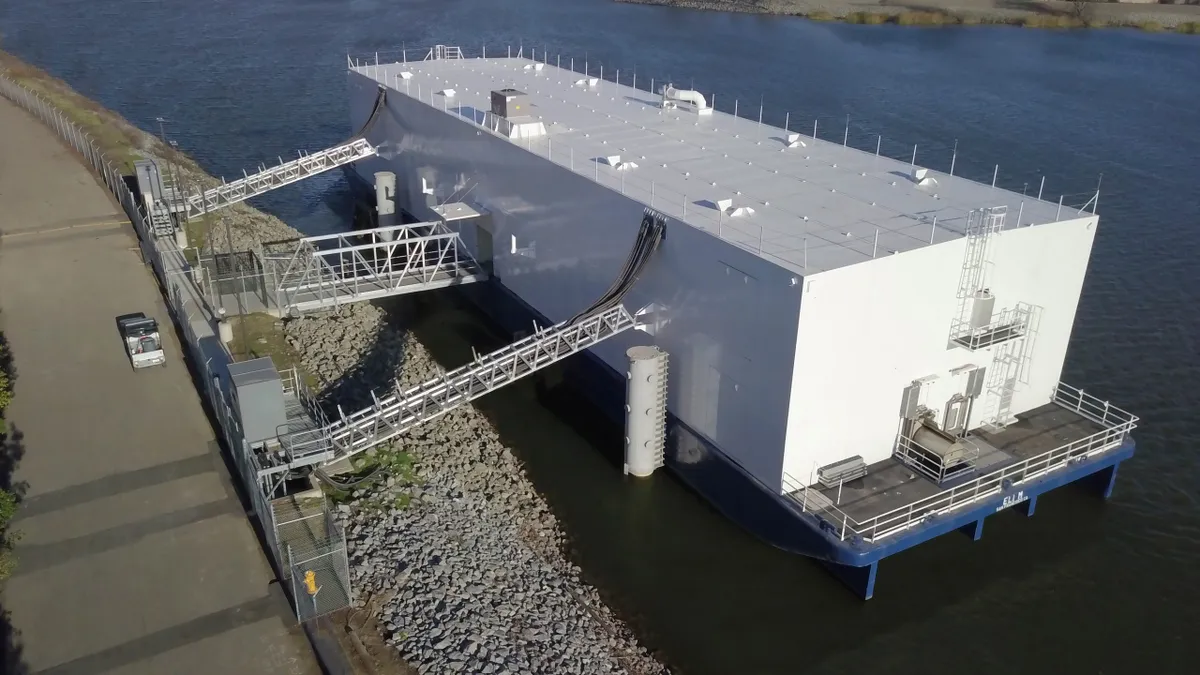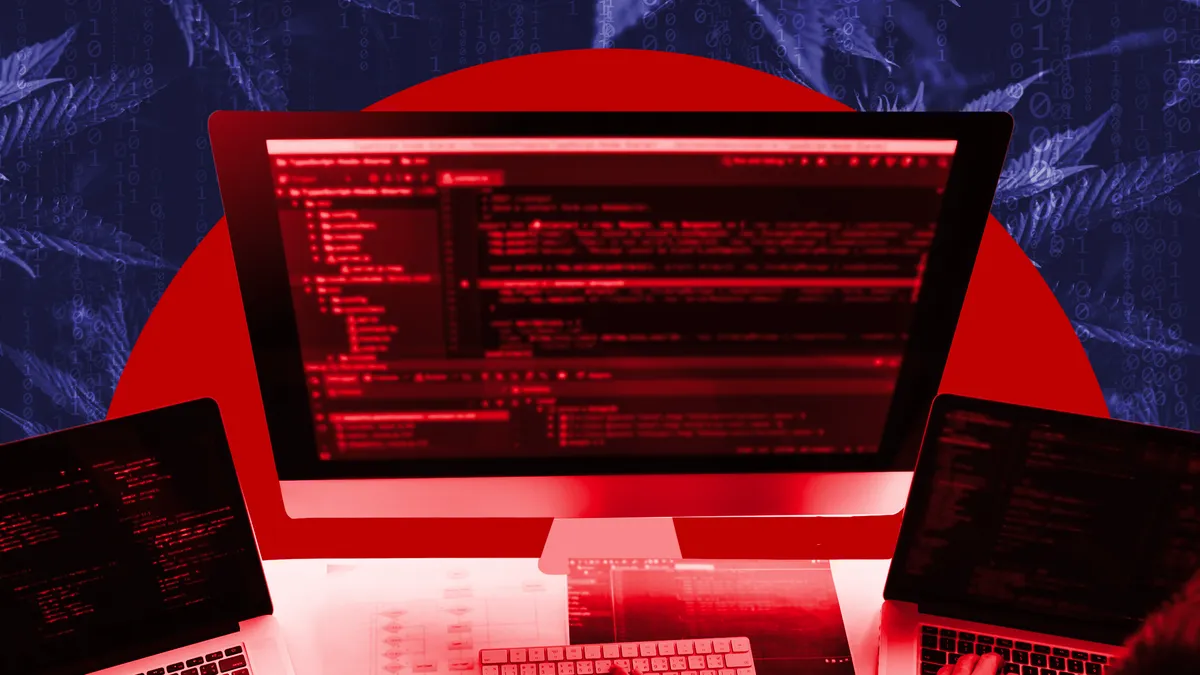The electricity business is rapidly changing. From the rise in renewable energy generation to the shift away from the vertically-integrated utility business model, the landscape is changing—not just for utilities, but for all the players in the space.

EnerNOC, one of the biggest players in demand side management, is adapting to the evolving and various needs of its customers: commercial and industrial consumers, system operators and utilities. Utility Dive spoke with Brad Davids, Vice President of Utility Solutions at EnerNOC, about the disruptive challenges and new opportunities EnerNOC, utilities and the electricity sector face today.
Here's what he had to say:
THE EVOLUTION OF THE ENERNOC BUSINESS MODEL
How has EnerNOC's business model evolved over time?
"EnerNOC got [its] start in open, deregulated markets, like PJM and ISO New England. You know, places where we can bid in demand response. It’s a market, it’s well established and there’s an auction and a price. We then started to expand our business into traditionally regulated markets where there’s no competition, like here where I am in Colorado—there’s one utility that serves all the customers and they’re the generation and the transmission and the retail company. We’ve got dozens of utilities that we work with on a bilateral basis to basically just deliver a demand response resource to them through an exclusive contract where they’re partners.
A number of utilities have looked at that model and said, 'You know, I like the idea but I’m not so comfortable with letting a third party come in and contract with my customers.' We’ve recently started to do work with a number of utilities where the utility maintains the customer relationship. They offer a demand response tariff, for instance. They don’t turn over the customer relationship to us but they’re using our software and our technology platform to manage the program. We handle the notifications and the visibility into load reduction and the measurement verification, but we sell that as a software license as opposed to selling the utility megawatts. […] It’s an evolution in our business model to where we’ve become much more flexible. We work with utilities in whatever way they’re most comfortable with and we’re not locked into a particular business model."
Are you considering expanding into the residential sector at all?
"Never say never, but the residential sector is just very different from a business model. A utility can buy a bunch of load control devices for air conditioners and it’s a mass market kind of play that fits the utility business model very well. […] At present, we think you get a lot more bang for your buck from the bigger loads than you do from a whole bunch of smaller ones. […] If somebody comes up with the magic way to get really, really cheap residential demand response, then we need to be watching for that."
THE VALUE OF BIG DATA
What are end-users and utilities actually getting out of energy usage data?
"We’ve got more granular commercial and industrial energy usage data flowing into our network operations center and various databases than any entity out there. I think we’re up to 14,000 different facilities with about 30,000 megawatts of connected load. Each one of those facilities is sending us back 5-minute or even 1-minute interval data. It’s a whole bunch of data, and we’re looking at all sorts of ways to utilize that data to uncover intelligence that utilities can use to operate their systems. Opower has done a great job providing utilities with tools that enable them to help their customers understand how they’re using energy compared to their neighbors or other similar homeowner. There’s that whole behavioral effect—no one wants to be in that bottom quartile. Just by having that information on how you’re comparing to others, you can motivate people to take action.
We think there’s the same opportunity to do that on the commercial and industrial side, though it’s more complicated because of the diversity of the businesses out there. But to the extent [that] we can bring data in—we’ve hundreds or thousands of grocery stores in our system, for instance—we can start to compare and contrast, once we normalize for weather and operations and things, how is your grocery store doing compared to the average? We work across so many different verticals that we can start to provide commercial and industrial benchmarks that we think provide both the energy user and the utility with interesting information that will lead to more efficient operations.
There’s a whole bunch of other things you can do with the data. You can anticipate when a facility might be in a position to set a new peak demand charge. Many utilities have tariffs where, for instance, 30% of what a commercial/industrial business pays for energy might be based not on how much they use, but on how much they use during those critical peak hours. To the extent that we can use data to project when a C&I customer might be in danger of setting a new peak, we can provide that information back to the customer in real-time and help them avoid that through load shifting or taking some other action, perhaps even in an automated way. So it’s sort of predictive capabilities and analytical benchmarking capabilities. We think there’s huge value to be mined out of granular and particularly real-time data, and we’ve got a bunch of initiatives looking at exactly what the business opportunities might be."
THE RISE OF RENEWABLE ENERGY
What's the value of energy management for renewables integration?
"One of the drivers that we’re getting a lot of interest in these days is integration with renewable resources. In some parts of the country—the Northwest is a great example—there’s a tremendous amount of wind coming online. In some other places, it’s solar that’s the problem. Wind tends to be the real issue because a little bit of wind is pretty easy to manage, but if you get a whole lot of wind—particularly if it’s all in one geographic area—it can either be blowing much more than you expect or all of a sudden stops blowing and you end up having to ramp other resources up and down to balance the wind out. Rather than building gas plants next to the wind farms to handle that balancing, [utilities] are looking at demand response to provide that short-term sort of load following, if you will.
The interesting thing about this application for demand response is it’s the first time we’ve increased load as well as decreased it. Our whole business has been built on cutting load to avoid peak but, in this case, there are times when the utility actually needs us to increase load in a productive way so they don’t have to ramp down a coal plant or a nuclear plant, which are very hard to moderate. The pilot we’ve done for BPA uses cold storage warehouses, very large refrigerated warehouses that can increase their chiller usage for a half-hour. Basically, it does a slight bit of pre-cooling, so the stuff in the warehouse can take a degree or two of extra cooling, and then they can cycle down at a later time."
DEMAND RESPONSE AND ENERGY EFFICIENCY
Why are we seeing an integration of demand response and energy efficiency?
"Demand-side management in general encompasses demand response and energy efficiency. What we’re hearing from a lot of utilities is that they’re interested in integrating those two activities, [whereas] in the past demand response has been managed out of a completely different group [within a utility] than energy efficiency. And there are some good reasons for that, in that demand response has a control room aspect to it, it’s real-time, it’s dispatchable and it has a different operational feel than energy efficiency does. [With energy efficiency] you change out the light bulbs, then you’re done and you get those savings for as long as the light bulbs are in place.
But […] the customers don’t really distinguish between the two. There’s an opportunity if you design a program properly to use the value of demand side management to help fund energy efficiency improvements. We’re talking to some utilities about the idea of, conceptually, if we go in and work with their customers, to identify opportunities for load reduction. A customer, for instance, says, 'I’m willing to shut off a few hundred kilowatts a few times a year.' Can the utility then, rather than just write them a check, give them a new building management system or fund some energy efficiency improvement based on the value of the demand response and thereby tie it together in a package deal?
Basically, we give the customer a real-time visibility into their load so they can make sure they’re dropping load as they need to during a DR event. They can use that same software platform to find efficiencies in their operations all the time—not just on peak days in the summer. [...] That’s a trend we’re seeing—an integration of demand response and energy efficiency, both from a utility perspective and a customer implementation perspective, so they not only trim their peak but cut their kilowatt-hour usage all the time."
MAKING THE BUSINESS CASE FOR ENERGY MANAGEMENT
How do you build the business case to utilities in vastly different markets?
"The challenge with this business is that, given the way utilities are regulated on a state-by-state basis, they’ve all got different drivers. In some states, utilities can actually make a return on energy efficiency and demand response investments. […] [Revenue] decoupling takes away the disincentive and some utilities actually get a bonus incentive for achieving certain kilowatt-hours savings goals. You find one of those [and] it’s not so hard to make the business case. In other places, they’ve got legislative mandates to cut peak demand or to do a certain amount of energy efficiency, it’s just something they’ve been told to do by the powers that be, and we can help them meet those goals in a cost-effective way. In a lot of cases for demand response, it comes down to being a lower cost alternative than what they might otherwise have to invest in to provide reliable power. We’re the low cost resource compared to a generator that’s only going to run 60-70 hours a year. So it just depends on the environment. If you find a utility that doesn’t have a problem—they’ve got plenty of capacity to deal with their peak demand and they have absolutely no incentives to promote energy efficiency—then what we provide is a tough sell."
THE ROLE OF ENERGY MANAGEMENT IN THE EVOLVING UTILITY BUSINESS
What's the value of energy management for energy service providers?
"We’re obviously watching how the industry is evolving. […] In some cases, utilities are realizing they need to get more engaged with their customers. Instead of just being viewed as a commodity provider, [they could] be a services provider. That might mean owning rooftop solar or helping with other energy management sorts of activities. Some of the stuff we can do with our energy management platform—to the extent that a utility might be able to take our software and brand it as their own. Customer engagement is a big thing in the utility industry these days and there’s a lot of work on the residential side. We see ourselves as a potential partner for utilities to help them provide value to their customers in terms of energy management. We’ve recently reconfigured our—and we do everything, it’s a software-as-a-service, cloud-based system, so the utility doesn’t need to build it or house it themselves. But they can incorporate our load management software into their website. They can brand it to look like theirs. We can put their logo on it [and] it can offer customers tools to better manage their energy usage. It’s more of a way for a utility to be more of a service provider and not just a commodity resource vendor."
What's the value of energy management for transmission and distribution network operators?
"Through deregulation, some utilities have already moved in that direction to where all they are is T&D companies. For those, I think the kinds of services we provide can offer different sort of value. Those utilities aren’t doing generation anymore so they don’t have any need to avoid the cost of a peaking power plant. But there are often areas with load constraints—whether it’s Manhattan or some outpost at the end of a transmission line. We’re getting more interest on the part of utilities in using demand response and potentially energy efficiency to decrease energy usage in a very targeted zone-specific kind of way. [We’re] seeing some of this coming out of California, Texas [and] various places that are looking at localized demand-side management. To the extent we’ve got a software tool that can allow utilities to dispatch only the load reduction in a particular geography or along a particular feeder line, that can help them manage their network more efficiently. The business case there is that […] we can decrease load where it needs to be decreased [and the utility] can defer the need to upgrade that [distribution] line and spend hundreds of millions of dollars. [That the] whole grid operator play to this—same product, different use."
Would you like to see more utility and energy news like this in your inbox on a daily basis? Subscribe to our Utility Dive email newsletter! You may also want to read Utility Dive's look at why customer buy-in is essential to smart grid adoption.

















